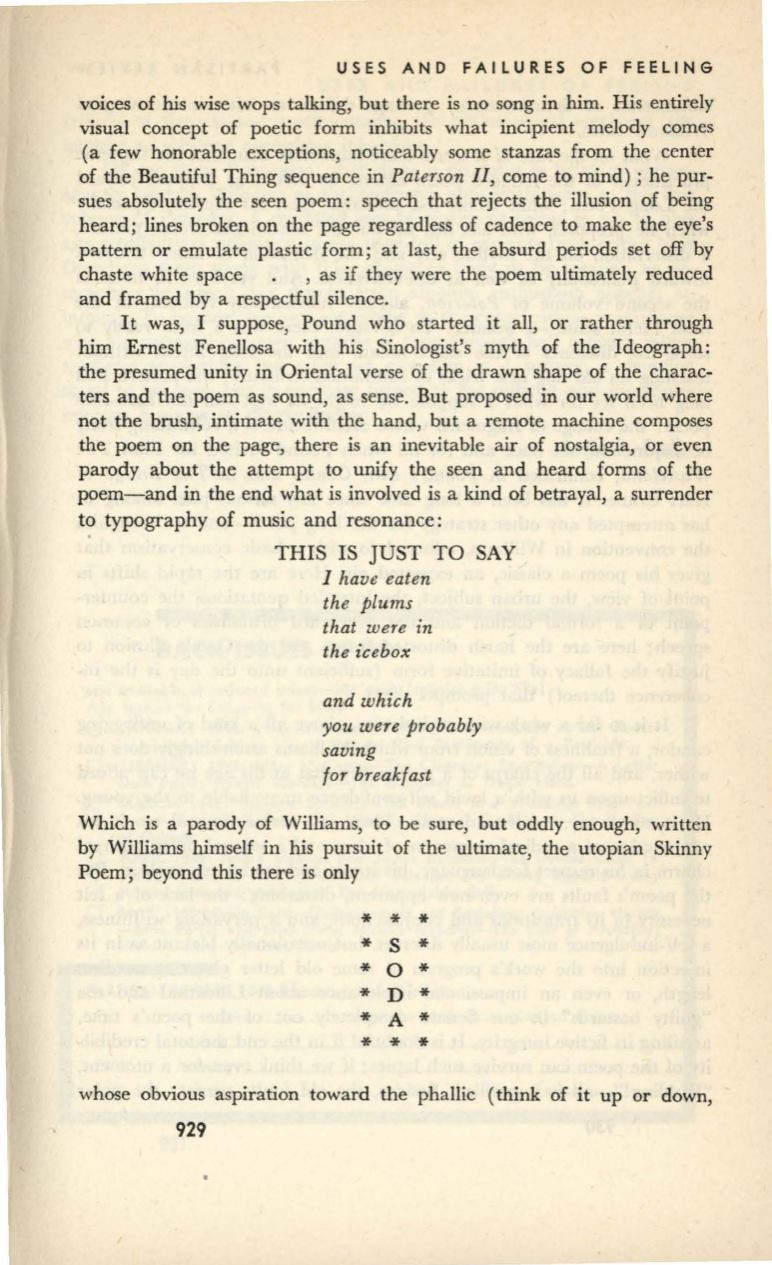
USES AND FAILURES OF FEELING
voices of his wise wops talking, but there is no song in him. His entirely
visual concept of poetic form inhibits what incipient melody comes
(a few honorable exceptions, noticeably some stanzas from the center
of the Beautiful Thing sequence in
Paterson II,
come to mind); he pur–
sues absolutely the seen poem: speech that rejects the illusion of being
heard; lines broken on the page regardless of cadence to make the eye's
pattern or emulate plastic form; at last, the absurd periods set off by
chaste white space
, as if they were the poem ultimately reduced
and framed by a respectful silence.
It was, I suppose, Pound who started it all, or rather through
him Ernest Fenellosa with his Sinologist's myth of the Ideograph:
the presumed unity in Oriental verse of the drawn shape of the charac–
ters and the poem as sound, as sense. But proposed in our world where
not the brush, intimate with the hand, but a remote machine composes
the poem on the page, there is an inevitable air of nostalgia, or even
parody about the attempt to unify the seen and heard forms of the
poem-and in the end what is involved is a kind of betrayal, a surrender
to typography of music and resonance:
THIS IS JUST TO SAY
I haue eaten
the plums
that were in
the icebox
and which
you were probably
sauing
for breakfast
Which is a parody of Williams, to
be
sure, but oddly enough, written
by Williams himself in his pursuit of the ultimate, the utopian Skinny
Poem; beyond this there is only
* * *
*
s
*
*
0
*
*
D
*
*
A
*
* * *
whose obvious aspiration toward the phallic (think of it up or down,
929


